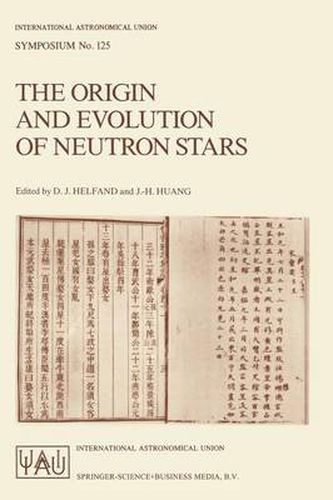Readings Newsletter
Become a Readings Member to make your shopping experience even easier.
Sign in or sign up for free!
You’re not far away from qualifying for FREE standard shipping within Australia
You’ve qualified for FREE standard shipping within Australia
The cart is loading…






This title is printed to order. This book may have been self-published. If so, we cannot guarantee the quality of the content. In the main most books will have gone through the editing process however some may not. We therefore suggest that you be aware of this before ordering this book. If in doubt check either the author or publisher’s details as we are unable to accept any returns unless they are faulty. Please contact us if you have any questions.
The publication of this volume coincides with the 55th anni versary of the discovery of the neutron and Landau’s suggestion at the time that one could make stars out of the new particles. This year also marks the twenty-fifth anniversary of the detection of Sco X-I, the first known X-ray binary system, and follows by just twenty years Jocelyn Bell Burnell’s discovery of that little bit of scruff o~ her chart record that led to the recognition of radio pulsars. As Q. Y. Qu, President of Nanjing University noted in his welcoming address, however, Chinese astronomers have been observing the consequences of neutron star formation for several millenia. It was appropriate, then, that this Symposium, the first Interna tional Astronomical Union meeting ever to be held in the Peoples Republic of China, be devoted to the topic of neutron stars. IAU Symposium Number 125, The Origin and Evolution of Neutron Stars , was convened on the morning of May 26, 1986 at Nanj ing University, Nanjing, Peoples Republic of China. One hundred and thirty-nine participants from fifteen countries, including over eighty-five scientists who were visiting China for the first time, met each day for the following week to discuss where neutron stars come from, how they evolve, and where they go. The meeting was judged, by unanimous acclaim of the participants, to be a scienti fic, cultural, and culinary success.
$9.00 standard shipping within Australia
FREE standard shipping within Australia for orders over $100.00
Express & International shipping calculated at checkout
This title is printed to order. This book may have been self-published. If so, we cannot guarantee the quality of the content. In the main most books will have gone through the editing process however some may not. We therefore suggest that you be aware of this before ordering this book. If in doubt check either the author or publisher’s details as we are unable to accept any returns unless they are faulty. Please contact us if you have any questions.
The publication of this volume coincides with the 55th anni versary of the discovery of the neutron and Landau’s suggestion at the time that one could make stars out of the new particles. This year also marks the twenty-fifth anniversary of the detection of Sco X-I, the first known X-ray binary system, and follows by just twenty years Jocelyn Bell Burnell’s discovery of that little bit of scruff o~ her chart record that led to the recognition of radio pulsars. As Q. Y. Qu, President of Nanjing University noted in his welcoming address, however, Chinese astronomers have been observing the consequences of neutron star formation for several millenia. It was appropriate, then, that this Symposium, the first Interna tional Astronomical Union meeting ever to be held in the Peoples Republic of China, be devoted to the topic of neutron stars. IAU Symposium Number 125, The Origin and Evolution of Neutron Stars , was convened on the morning of May 26, 1986 at Nanj ing University, Nanjing, Peoples Republic of China. One hundred and thirty-nine participants from fifteen countries, including over eighty-five scientists who were visiting China for the first time, met each day for the following week to discuss where neutron stars come from, how they evolve, and where they go. The meeting was judged, by unanimous acclaim of the participants, to be a scienti fic, cultural, and culinary success.